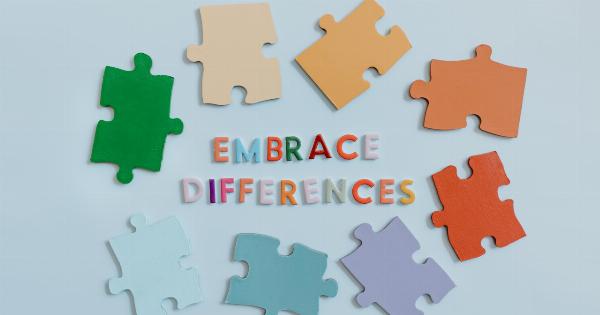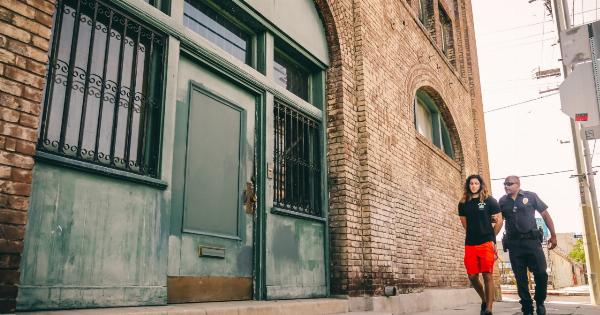Refurbishments are a common occurrence in various environments, such as homes, offices, and public spaces.
While they bring about positive changes and improvements, they can also cause inconvenience and disruption to the daily lives of individuals and communities. Therefore, it is crucial to approach refurbishments with a focus on raising awareness rather than arousing suspicion.
By implementing effective communication strategies, considering the needs of different stakeholders, and prioritizing transparency, a refurbishment process can be transformed into a collaborative and inclusive experience.
1. Importance of Communication
Communication plays a pivotal role in any refurbishment project. It is crucial to inform all stakeholders, including residents, businesses, and the wider community about the nature and scope of the refurbishment.
By sharing updates and progress reports, concerns and questions can be addressed in a timely manner. This not only fosters trust and cooperation but also ensures that everyone is well-prepared for any temporary inconveniences that may arise.
2. Collaboration with Local Community
Refurbishments often take place in established neighborhoods and communities. It is essential to collaborate with local residents and organizations to ensure that their voices are heard and their concerns are addressed adequately.
Engaging in dialogue, conducting community meetings, and involving community representatives in the decision-making process helps to establish a sense of ownership and inclusivity. Through this collaborative effort, a refurbishment can become a source of pride and positive change for the local community.
3. Consideration of Accessibility
Inclusive refurbishments should prioritize accessibility for all individuals, including those with disabilities or mobility restrictions.
It is necessary to consider the installation of temporary ramps, accessible pathways, and alternative entrances to minimize disruptions for individuals with specific needs. By considering accessibility from the early stages of planning and communicating these measures, the refurbishment process can proceed smoothly, while ensuring that everyone can continue to access the space safely and independently.
4. Temporary Relocation Solutions
Refurbishing occupied spaces can be particularly challenging. Some projects may require temporary relocation of residents or businesses to facilitate the refurbishment process.
In these cases, it is crucial to offer support and assistance to affected individuals or entities. Providing clear information on relocation options, financial support, and an accessible point of contact can significantly reduce stress and uncertainty during the refurbishment period.
5. Noise and Dust Management
Refurbishments often involve construction activities that generate noise and dust. These factors can cause disruption and discomfort to the surrounding community.
Implementing effective noise and dust management strategies, such as scheduling noisy works during appropriate hours and utilizing appropriate containment measures, can greatly minimize the impact on nearby residents and businesses. Additionally, regularly updating the community about anticipated noise and dust levels allows individuals to plan accordingly and make necessary adjustments to their routines.
6. Environmental Considerations
With increasing environmental awareness, it is essential for refurbishment projects to prioritize sustainable practices. This can include incorporating energy-efficient technologies, utilizing eco-friendly materials, and minimizing waste generation.
By communicating these efforts to the community, refurbishments can serve as examples of responsible environmental stewardship. This not only raises awareness but also showcases the positive impact that refurbishments can have on sustainability and the overall well-being of the community.
7. Safety Precautions
During a refurbishment, safety should be a paramount consideration.
Implementing strict safety procedures, such as appropriate signage, designated pedestrian routes, and barriers, helps prevent accidents and ensures the well-being of workers, residents, and visitors. Robust safety measures should be communicated to the community to alleviate concerns and build confidence in the refurbishment process.
Regular updates on safety inspections and measures taken provide reassurance that the project is being carried out with utmost care.
8. Managing Timelines and Expectations
One common source of frustration during refurbishments is the uncertainty regarding timelines and project completion. To alleviate this concern, it is essential to set realistic expectations and communicate project milestones.
When unforeseen delays occur, prompt communication with the affected parties, along with clear explanations and revised timetables, fosters understanding and patience. Managing timelines effectively ensures transparency and reduces speculation or suspicion surrounding the refurbishment process.
9. Building Public Relations
Public relations play a critical role in ensuring that refurbishments are perceived positively by the community.
Establishing channels of communication, such as dedicated websites, social media platforms, and regular newsletters, allows for efficient dissemination of information, progress updates, and relevant contact details. This improves transparency, reduces suspicion, and encourages active participation and feedback from the community. Positive public relations can transform the perception of a refurbishment from a disruption to an opportunity for positive change.
10. Post-Refurbishment Engagement
Engaging with the community after the completion of a refurbishment project is vital for assessing the success of initiatives and addressing any ongoing concerns.
Conducting post-refurbishment surveys, organizing community events, and actively seeking feedback help in evaluating the quality of the refurbishment and addressing any outstanding issues. Such engagement highlights the commitment to continuous improvement and ensures that the refurbishment process remains a positive experience for all stakeholders.





























